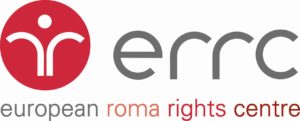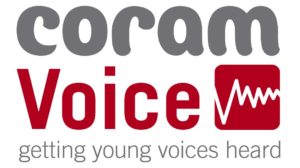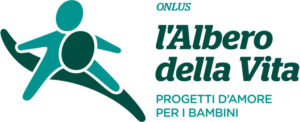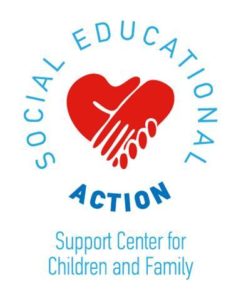Rafforzare le capacità dei professionisti dell’Unione Europea di soddisfare i diritti dei minori vulnerabili
Questo progetto è cofinanziato dal programma “Diritti fondamentali e cittadinanza” dell’Unione Europea e Ulteriori finanziamenti sono stati stanziati dall’Allan and Nesta Ferguson Charitable Trust ; coinvolge partner provenienti da dieci paesi europei
Coram Voice and Coram Children’s Legal Centre dall’Inghilterra, FICE Bulgaria, Czech Helsinki Committee Repubblica Ceca, il College University di Cork, Children of Slovakia Foundation, Estonian Centre for Human Rights, Centro europeo per i diritti dei Rom (Ungheria), L’Albero della Vita Coopertiva Sociale (Italia), Empowering Children Foundation (Polonia), Social Educational Action (Grecia), and FCYA Ungheria.
Le norme internazionali, e molte leggi nazionali, riconoscono che i bambini e i ragazzi hanno il diritto di esprimere le proprie opinioni – e di avere i loro desideri e sentimenti presi in considerazione nelle decisioni che li riguardano.
Unlocking Children’s Rights è un’innovativa risorsa formativa, che è stata pilotata in modo soddisfacente in Europa. Consente ai professionisti che lavorano con i bambini di:
- Rafforzare le proprie abilità e conoscenze sul tema dei diritti dei bambini
- Consente ai bambini e ai ragazzi di esprimere il loro punto di vista
- Comunicare in modo efficace ed empatico con bambini e ragazzi all’interno del contest professionale
- Assicurarsi che i bambini partecipino, comprendendole, alle decisioni che li riguardano
I quattro moduli sono:
– Modulo 1: Introduzione ai diritti del bambino;
– Modulo 2: Introduzione alla comunicazione e sviluppo infantile;
– Modulo 3: Capacità di comunicazione;
– Modulo 4: Linee guida per una giustizia a misura di minore.

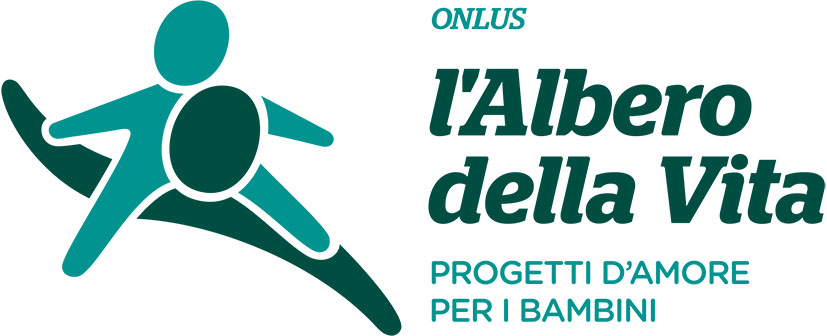
Una guida per usufruire di questi materiali
Materiali di formazione per i facilitatori
Manuale del partecipante e diapositive di PowerPoint
Modulo 4: Linee guida per una giustizia a misura di minore
Modulo conclusivo
E-learning: Test con domande a scelta multipla
Modulo 1 – introduzione ai diritti dell’infanzia
Test-summary
0 of 10 questions completed
Questions:
- 1
- 2
- 3
- 4
- 5
- 6
- 7
- 8
- 9
- 10
Information
Questo quiz prova la tua conoscenza e la comprensione dei diritti dell’infanzia e si basa sui contenuti del modulo 1 del pacchetto di formazione.
You have already completed the test before. Hence you can not start it again.
Test is loading...
You must sign in or sign up to start the test.
You have to finish following test, to start this test:
Results
0 of 10 questions answered correctly
Time has elapsed
You have answered 0 out of 0 questions correctly
Categories
- Not categorized 0%
-
Congratulazioni! Hai passato il test! Per ottenere un attestato clicca qui.
- 1
- 2
- 3
- 4
- 5
- 6
- 7
- 8
- 9
- 10
- Answered
- Review
-
Question 1 of 10
1. Question
La uncrc (convenzione internazionale dei diritti dell’infanzia e dell’adolescenza) ha la seguente serie di diritti:
Correct
vedi attività 1.1. Per maggiori informazioni
Incorrect
vedi attività 1.1. Per maggiori informazioni
-
Question 2 of 10
2. Question
Gli articoli della uncrc sono spesso raggruppati in 3 categorie conosciute come le 3p. Sono:
Correct
vedi attività 1.1 per maggiori informazioni
Incorrect
vedi attività 1.1 per maggiori informazioni
-
Question 3 of 10
3. Question
Quale dei seguenti non è un principio cardine della uncrc:
Correct
vedi attività 1.2 per maggiori informazioni
Incorrect
vedi attività 1.2 per maggiori informazioni
-
Question 4 of 10
4. Question
Quando a tutti i bambini è vietato indossare copricapo a scuola, questo è un esempio di:
Correct
vedi attività 1.2a per maggiori informazioni
Incorrect
vedi attività 1.2a per maggiori informazioni
-
Question 5 of 10
5. Question
La discriminazione diretta può essere giustificata nelle seguenti circostanze
Correct
vedi attività 1.2a per maggiori informazioni
Incorrect
vedi attività 1.2a per maggiori informazioni
-
Question 6 of 10
6. Question
vedi attività 1.2b per maggiori informazioni
Correct
See Activity 1.2B for more information
Incorrect
See Activity 1.2B for more information
-
Question 7 of 10
7. Question
Quale delle seguenti frasi meglio descrive il “superiore interesse”
Correct
vedi attività 1.2b per maggiori informazioni
Incorrect
vedi attività 1.2b per maggiori informazioni
-
Question 8 of 10
8. Question
Quale delle seguenti attività rientra sotto il diritto alla ‘vita, alla sopravvivenza e allo sviluppo’?
Correct
vedi attività 1.2c per maggiori informazioni
Incorrect
vedi attività 1.2c per maggiori informazioni
-
Question 9 of 10
9. Question
Il fatto che un bambino sia presente ad un’udienza è sufficiente affinchè sia soddisfatto il diritto alla partecipazione
Correct
vedi attività 1.2d per maggiori informazioni
Incorrect
vedi attività 1.2d per maggiori informazioni
-
Question 10 of 10
10. Question
Esiste un’età minima sotto la quale non dovrebbe essere permesso ai bambini di parlare alle udienze che li riguardino
Correct
vedi attività 1.2d per maggiori informazioni
Incorrect
vedi attività 1.2d per maggiori informazioni
Modulo 2 – introduzione allo sviluppo del bambino e alle competenze comunicative
Test-summary
0 of 10 questions completed
Questions:
- 1
- 2
- 3
- 4
- 5
- 6
- 7
- 8
- 9
- 10
Information
Questo quiz verifica la tua conoscenza e comprensione delle tappe di sviluppo del bambino ed è basato sui contenuti del modulo 2 del pacchetto di formazione
You have already completed the test before. Hence you can not start it again.
Test is loading...
You must sign in or sign up to start the test.
You have to finish following test, to start this test:
Results
0 of 10 questions answered correctly
Time has elapsed
You have answered 0 out of 0 questions correctly
Categories
- Not categorized 0%
-
Congratulazioni! Hai passato il test! Per ottenere un attestato clicca qui.
- 1
- 2
- 3
- 4
- 5
- 6
- 7
- 8
- 9
- 10
- Answered
- Review
-
Question 1 of 10
1. Question
La formazione fa riferimento a sei categorie di sviluppo del bambino. Quale delle seguenti non è una di queste categorie:
Correct
Vedi attività 2.1 per maggiori informazioni
Incorrect
Vedi attività 2.1 per maggiori informazioni
-
Question 2 of 10
2. Question
Vero o falso: c’è un modello per lo sviluppo del bambino, compreso lo sviluppo del linguaggio e le abilità sociali. Quando un bambino non segue questo modello, ciò è sempre motivo di preoccupazione e la situazione dovrebbe essere valutata professionalmente.
Correct
Vedi attività 2.1 per maggiori informaizoni
Incorrect
Vedi attività 2.1 per maggiori informaizoni
-
Question 3 of 10
3. Question
Comprendere lo sviluppo del bambino è importante per tutti i professionisti che lavorano con i bambini perché:
Correct
Vedi attività 2.1 per maggiroi informazioni
Incorrect
Vedi attività 2.1 per maggiroi informazioni
-
Question 4 of 10
4. Question
Secondo la teoria dell’attaccamento, le relazioni si sviluppano nei primi___ mesi della sua vita, influenzando lo sviluppo futuro
Correct
Vedi attività 2.2 per maggiori informaizoni
Incorrect
Vedi attività 2.2 per maggiori informaizoni
-
Question 5 of 10
5. Question
I seguenti fattori aiutano a sviluppare attaccamento sicuro:
Correct
Vedi attività 2.2 per maggiori informazioni
Incorrect
Vedi attività 2.2 per maggiori informazioni
-
Question 6 of 10
6. Question
L’autostima è:
Correct
Vedi attività 2.2 for maggiori informazioni
Incorrect
Vedi attività 2.2 for maggiori informazioni
-
Question 7 of 10
7. Question
I seguenti fattori aiutano a sviluppare l’autostima:
Correct
vedi attività 2.2 per maggiori informaizoni
Incorrect
vedi attività 2.2 per maggiori informaizoni
-
Question 8 of 10
8. Question
La resilienza è
Correct
Vedi attività 2.2 per maggiori informazioni
Incorrect
Vedi attività 2.2 per maggiori informazioni
-
Question 9 of 10
9. Question
I seguenti fattori aiutano a sviluppare resilienza:
Correct
vedi attività 2.2 per maggiori informazioni
Incorrect
vedi attività 2.2 per maggiori informazioni
-
Question 10 of 10
10. Question
Incomprensioni nella comunicazione possono accadere perché:
Correct
Vedi attività 2.3 per maggiori informazioni
Incorrect
Vedi attività 2.3 per maggiori informazioni
Modulo 3 – Competenze Comunicative
Test-summary
0 of 10 questions completed
Questions:
- 1
- 2
- 3
- 4
- 5
- 6
- 7
- 8
- 9
- 10
Information
Questo quiz testa la tua conoscenza e comprensione delle competenze comunicative che dovrebbero possedere i professionisti che lavorano con i bambini ed è basato sui contenuti modulo 3 del pacchetto di formazione.
You have already completed the test before. Hence you can not start it again.
Test is loading...
You must sign in or sign up to start the test.
You have to finish following test, to start this test:
Results
0 of 10 questions answered correctly
Time has elapsed
You have answered 0 out of 0 questions correctly
Categories
- Not categorized 0%
-
Congratulazioni! Hai passato il test! Per ottenere un attestato clicca qui.
- 1
- 2
- 3
- 4
- 5
- 6
- 7
- 8
- 9
- 10
- Answered
- Review
-
Question 1 of 10
1. Question
Ci sono diversi motivi per cui i professionisti dovrebbero comunicare con i bambini. Quale di queste non è presentato nei materiali di formazione?
Correct
Vedi attività 3.1 per maggiori informazioni
Incorrect
Vedi attività 3.1 per maggiori informazioni
-
Question 2 of 10
2. Question
Quando i professionisti dovrebbero comunicare con i bambini?
Correct
Vedi attività 3.2 per maggiori informazioni
Incorrect
Vedi attività 3.2 per maggiori informazioni
-
Question 3 of 10
3. Question
Che cosa rende un ambiente di comunicazione non a misura di bambino?
Correct
Vedi attività 3.3 per maggiori informazioni
Incorrect
Vedi attività 3.3 per maggiori informazioni
-
Question 4 of 10
4. Question
Quali di questi fattori dovrebbero determinare se un professionista debba offrire la riservatezza della comunicazione per un bambino o no?
Correct
Vedi attività 3.4 per maggiori informazioni
Incorrect
Vedi attività 3.4 per maggiori informazioni
-
Question 5 of 10
5. Question
Quale delle seguenti non è una barriera per la comunicazione ?
Correct
Vedi attività 3.6 per maggiori informazioni
Incorrect
Vedi attività 3.6 per maggiori informazioni
-
Question 6 of 10
6. Question
Quale dei seguenti è un buon modo per far fronte a comportamenti difficili di un bambino?
Correct
Vedi attività 3.8 per maggiori informazioni
Incorrect
Vedi attività 3.8 per maggiori informazioni
-
Question 7 of 10
7. Question
Metodi alternativi di comunicazione sono necessari solo per i bambini che hanno difficoltà di apprendimento o bisogni educativi special:
Correct
Vedi attività 3.10 per maggiori informazioni
Incorrect
Vedi attività 3.10 per maggiori informazioni
-
Question 8 of 10
8. Question
Quale delle seguenti non è una parte potenziale di un ‘kit di strumenti di comunicazione’
Correct
Vedi attività 3.10 per maggiori informazioni
Incorrect
Vedi attività 3.10 per maggiori informazioni
-
Question 9 of 10
9. Question
Una volta che avete comunicato con i bambini a sufficienza, non è più importante che si dedichi del tempo a qualsiasi valutazione o programmazione individuale prima di parlare con un nuovo bambino
Correct
Vedi attività 3.11 per maggiori informazioni
Incorrect
Vedi attività 3.11 per maggiori informazioni
-
Question 10 of 10
10. Question
Quale delle seguenti affermazioni sono potenziali risorse per un aiuto nella comunicazion?
Correct
Vedi attività 3.13 per maggiori informazioni
Incorrect
Vedi attività 3.13 per maggiori informazioni
Modulo 4 – linee guida per una giustizia a misura di bambino
Test-summary
0 of 10 questions completed
Questions:
- 1
- 2
- 3
- 4
- 5
- 6
- 7
- 8
- 9
- 10
Information
Questo quiz testa la tua conoscenza e comprensione delle line guida a misura di bambino ed è basata sui contenuti del modulo 4 di questo pacchetto formativo.
You have already completed the test before. Hence you can not start it again.
Test is loading...
You must sign in or sign up to start the test.
You have to finish following test, to start this test:
Results
0 of 10 questions answered correctly
Time has elapsed
You have answered 0 out of 0 questions correctly
Categories
- Not categorized 0%
-
Congratulazioni! Hai passato il test! Per ottenere un attestato clicca qui.
- 1
- 2
- 3
- 4
- 5
- 6
- 7
- 8
- 9
- 10
- Answered
- Review
-
Question 1 of 10
1. Question
Le linee guida per una giustizia a misura di bambino sono applicate ai minori sotto i 18 anni in quale dei seguenti contesti:
Correct
Vedi attività 4.1 per maggiori informazioni
Incorrect
Vedi attività 4.1 per maggiori informazioni
-
Question 2 of 10
2. Question
Le linee guida a misura di bambino sono applicate solamente in inghilterra:
Correct
Vedi attività 4.1per maggiori informazioni
Incorrect
Vedi attività 4.1per maggiori informazioni
-
Question 3 of 10
3. Question
La giustizia a misura di bambino è:
Correct
Vedi attività 4.1 per maggiori informazioni
Incorrect
Vedi attività 4.1 per maggiori informazioni
-
Question 4 of 10
4. Question
Le linee guida a misura di bambino riguardano solo questioni relative ai procedimenti giudiziari
Correct
Vedi attività 4.1 per maggiori informazioni
Incorrect
Vedi attività 4.1 per maggiori informazioni
-
Question 5 of 10
5. Question
Quale delle seguenti affermazioni è una componente di un sistema di giustizia a misura di bambino in tutti i punti del procedimento?
Correct
Vedi attività 4.1 per maggiori informazioni
Incorrect
Vedi attività 4.1 per maggiori informazioni
-
Question 6 of 10
6. Question
Quale dei seguenti gruppi di professionisti non è influenzata dalle linee guida della giustizia a misura di bambino:
Correct
Vedi attività 4.1 per maggiori informazioni
Incorrect
Vedi attività 4.1 per maggiori informazioni
-
Question 7 of 10
7. Question
Le linee guida della giustizia a misura di bambino non sono rilevanti nei procedimenti in materia di immigrazione:
Correct
Vedi attività 4.1 per maggiori informazioni
Incorrect
Vedi attività 4.1 per maggiori informazioni
-
Question 8 of 10
8. Question
Le linee guida della giustizia a misura di bambino non sono rilevanti per la cura procedimenti:
Correct
Vedi attività 4.1 per maggiori informazioni
Incorrect
Vedi attività 4.1 per maggiori informazioni
-
Question 9 of 10
9. Question
Le linee guida per una giustizia a misura di bambino sono rilevanti nei procedimenti penali:
Correct
Vedi attività 4.1 per maggiori informazioni
Incorrect
Vedi attività 4.1 per maggiori informazioni
-
Question 10 of 10
10. Question
Ci sono ___ sezioni nelle line guida per una giustizia a misura di bambino:
Correct
Vedi attività 4.2 per maggiori informazioni
Incorrect
Vedi attività 4.2 per maggiori informazioni

Questo progetto è cofinanziato dal programma “Diritti fondamentali e cittadinanza” dell’Unione Europea
Ulteriori finanziamenti sono stati stanziati dall’Allan and Nesta Ferguson Charitable Trust
I contenuti di questa pubblicazione sono di esclusiva responsabilità del Coram Children’s Legal Centre e dei partner del progetto e non possono essere assunti in alcun modo come espressione del punto di vista della Commissione Europea.






